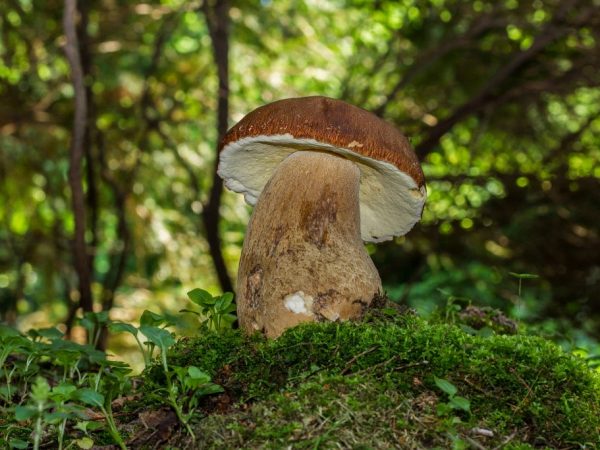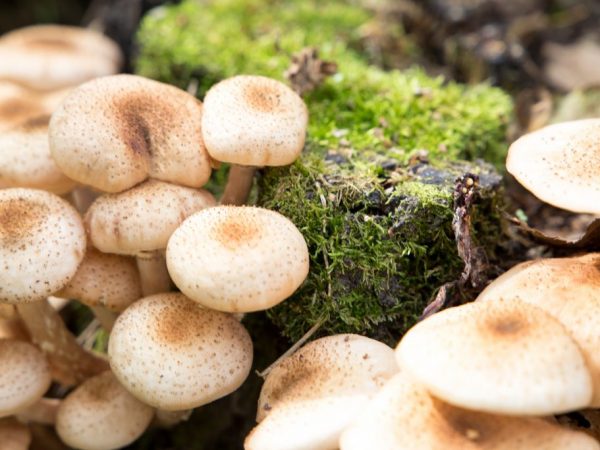Mushrooms in the north of the Moscow region
People often pick mushrooms in the north of the Moscow region. The advantage of this area is that, firstly, it is considered environmentally friendly and, secondly, it is easily accessible by transport. There is an accurate map of the places where mushrooms are found during the season and off-season.

Mushrooms in the north of the Moscow region
Features of the region
The forest cover of the region is about 40%, because a significant part of coniferous and mixed forests is in the north. Spruce forests prevail here. The northern suburbs of Moscow are irrigated by tributaries of the Volga, there are shallow lakes, many reservoirs, sometimes there are swampy places. There are no hills, few forest-steppe and meadows.
The outskirts of Moscow are considered environmentally polluted, which makes "quiet hunting" within the city limits and nearby dangerous. However, thanks to the developed transport system, it is not difficult to get to the remote corners of the region in a day. The weather and flora here are favorable for the growth of mushrooms.
Mushroom Locations Map
Places near settlements and villages are popular in the northern regions, especially many mushroom pickers visit these places in the autumn. It is important to calculate the distance and time in such a way in order to have time to return from the forest before dark: after all, you will have to walk a few more kilometers from the railway stations to the mushroom place.
By road
In the settlements of Kartamazovo and Troparevo, pine forests and deciduous glades are widespread, so most often they collect here:
- boletus;
- aspen mushrooms;
- honey mushrooms.
Irina Selyutina (Biologist):
When you ask a mushroom picker, you can simply hear about what is in the basket: "honey mushrooms, lumps." But these mushrooms have their own species, which lovers of "quiet hunting" practically do not think about. They know when to go out to collect these wonderful edible "jewels" of the forest, but it would also be nice to know the ecological characteristics of the collected species and then they will not have to look for mushrooms or mushrooms (boletus and aspen mushrooms) "in principle": a person will know for sure , to collect what kind he purposefully moved into the forest and definitely will not go home "empty", without the desired trophy.
The ecological characteristic of a species, or ecological criterion, is a combination of all environmental factors (biotic, abiotic, anthropogenic) that affect the species in its permanent habitat and are necessary for normal life.
In Kartamazovo there are minibuses from the Salaryevskaya metro station and buses from the Teply Stan AS. Minibuses go to Troparevo from the Sombrero and Viva shopping centers, as well as from the Anino metro station. The journey takes on average up to one and a half hours. By car, the distance is covered in just 40 minutes.
Dubna is famous for the abundance of russula, butter and honey agarics. The Volga River flows in the city, and in the vicinity there is a pine forest. And although the distance from Moscow to Dubna is about 135 km, it can be easily overcome in several ways:
- Train: inexpensive and fast mode of transport. Travel time - up to 3 hours. Departure from the Savelovsky railway station. Electric trains run regularly, every two hours.
- Bus: it is a more comfortable and faster option. Coming from the Savyolovskiy Vokzal AS.
- Car: motorists often take fellow travelers. They park near the places of boarding the bus at the Savelovsky railway station.
Tourism is developed in Dubna, so mushroom pickers who are late on the way will always find a place to sleep.
By trains

Suburban forests are rich in mushrooms
In the Moscow region, a system of commuter trains is well developed, which makes the path easier for mushroom pickers.
On the northern branches (Leningradskaya, Savelovskaya, Yaroslavskaya) they get to mushroom spots in all corners of the Moscow region.
The Savelovskaya line starts moving from Moscow along the stations Lobnya, Nekrasovskaya, Katuar. There are many lakes, the area around which is rich in meadow gullies and swamps.
A spruce forest grows in front of Lobnya. The most mushroom place is the village of Khoroshilovo. Experts also advise the final stop "Tourist" and "Lugovaya", located not far from the station. In these forests, chanterelles, honey agarics, aspen mushrooms are collected. To get to the place, on average, you will have to travel from 2 to 4 km in one direction.
On the Leningradskaya branch, the nearest mushroom points are located in Firsanovka and Podrezkovo. Here are common:
- White mushrooms;
- honey agarics;
- mushrooms;
- boletus.
Not far from the stations Povarovo and Golovkovo, as well as in the vicinity of Frolovsky and Pokrovka, rare species are found.
On average, the journey from the station takes up to one and a half hours (from 1 to 3 km).
The Yaroslavl direction is also productive, four mushroom places have long been known here:
- Neighborhoods of Zelenogradskaya station.
- Settlement Darino and neighboring Eldigino.
- Environs of the Kalistovo station.
- Station Abramtsevo.
If you get off at Pushkino station or move south from Darino, you can get to the complex of water bodies. The territory is located between the Savelovsky and Yaroslavsky directions. The path to the destination along the branch is up to 5 km. Honey mushrooms, boletus, white mushrooms, mushrooms, jaundice grow in these parts.
Collection time
It is important when hunting not to be mistaken with the selected time interval. The fruiting of the species differs in time, so it will not work to collect the porcini mushroom and the winter mushroom at the same time. Ceps, stitches, morels, May mushroom are considered spring ones. In summer, after heavy rains, it is time for honey agarics, boletus and aspen mushrooms. And in the autumn (from August to mid-October) - the peak of the mushroom season. Winter mushrooms bear fruit up to the established temperature of -6 ° C.
Conclusion
Due to the geographical conditions, the northern part of the Moscow region is rich in mushrooms in the autumn season. Connoisseurs start hunting in the spring and end with the first snow. The most popular mushrooms for collection are honey agarics, boletus and chanterelles. You can get to the points by electric trains, minibuses and a car.


